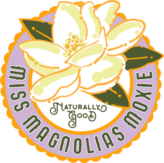Scientific Name: (Chelidonium majus, Papaveraceae Family)
Common Name: Chelidonium, Garden Celandine, Great Celandine, Tetterwort
Medicinal Part: Rootstock, Herb
Description: Celandine is a biennial or perennial plant widespread in damp, rich soil in the northeastern United States and along fences, roads, hedges, as well as in waste places, in Europe.
The finger-thick cylindrical rootstock is red-brown on the outside, orange-yellow inside, and contains milky juice. The hollow stem is round, smooth, and swollen at the joints. The leaves are alternate, pinnate (having leaflets arranged on either side of the stem, typically in pairs opposite each other) or pinnatified, with ovate, mildly and irregularly lobed leaflets. The bright yellow flowers have four petals, are 1/2 to 3/4 inch across, and grow in a sparse umbel from April to September. The entire plant contains a bitter, orange-yellow juice that turns red when exposed to air.
Properties and Uses: Anodyne (pain killing), antispasmodic, caustic (eating away organic tissue), diaphoretic (promotes perspiration), diuretic, hydragogue (causing a discharge of water), narcotic (affects mood or behavior), purgative (laxative)
Taken internally, celandine has a special effect on the digestive system (stomach, gall bladder, liver) and its antispasmodic properties make it useful for asthmatic symptoms. As a hydragogue, it is used for dropsical conditions (edema). Externally, made into an ointment or a poultice, celandine can be used for skin diseases like herpes, eczema, and ringworm. The juice has some antiseptic properties and has long been used to remove warts. Mix with vinegar when using the juice on the skin.
CAUTION: The juice can produce poisoning by congesting the lungs and liver and by narcotic action on the nervous system. Skin poisoning has also resulted from handling the crushed plant.
Dose and Preparation: Gather the rootstock in spring, before the plant flowers. Use with extreme caution, preferably with medical direction. The dried plant is less active than the fresh.
Infusion:
Use 1 level teaspoon, rootstock or herb with cup boiling water; steep for 30 minutes. Drink cold, 1/2 cup a day.
Tincture:
A dose is 10-15 drops.
Juice:
For warts, dab no more than 2-3 warts at a time with fresh juice, two to three times a day.
Resources: The Herbalist, East West, The Herb Book
Daily Dose is intended as an informational guide. The remedies, approaches and techniques described herein are meant to supplement, and not be a substitute for professional medical care or treatment. They should not be used to treat a serious ailment without prior consultation with a qualified health care professional.

